|
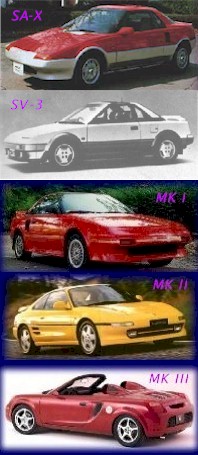
|
1976
- The
project that would eventually become known as the MR2 was
conceived in 1976. However, the MR2 project did not get kicked off
until 1979. It was then that the design process got
underway. While recognizable even
from the first sketch, the car was to go through many changes
before the first actual prototype, the SA-X was built. The activity at
Toyota at the time was very exciting for those working on the
project, some even giving up their summer vacations to help test
the car! |
| 1979
- The project was
re-evaluated by management and the Prototype designated SA-X was built. The car was
designed by Seiichi Yamauchi The inspiration for the design was
the Katana, a Japanese ceremonial sword. |
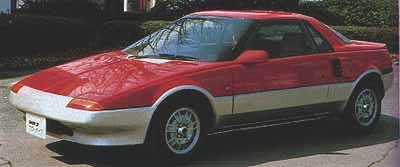 |
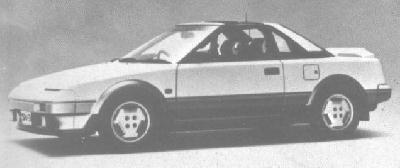 |
1983
- Final
design changes are made and the SV-3 is debuted at the
Tokyo auto show. The SV-3 caused great excitement at the show as
this was the first light weight mid-engine sports car built in
Japan. |
| 1984
- The SV-3
receives some body changes and the first production MR2 (internal code AW11)
is
launched in Japan. The MR2 wins the Japanese "Car of the Year"
title. |

|
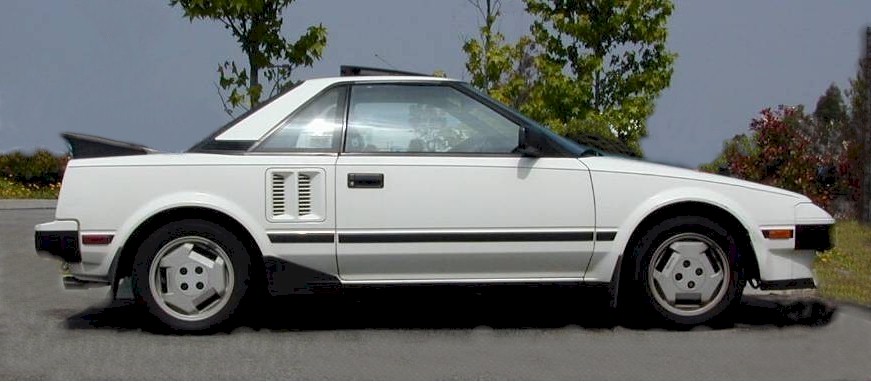 |
1985
- The first year of the first generation
(MK
I) MR2 in North America with the first cars sold in February. Available in hardtop and sun-roof. The front spoiler on
the '84 and '85 model is a little more boxy than on all other MK I MR2s in
following years.
|
| 1985
- In March
the MR2 is launched in Britain. In Japan
a new sports package is offered with an upgraded suspension.
The
North American model has 112 HP due to emissions
restrictions.
In the history of the
automobile few mid-engine automobiles have been made, especially
affordable ones. The engine and suspension were transferred
over almost completely intact from Toyota's Corolla GT-S.
The automotive press loved the car, and the car received high
accolades from both owners and the press alike.
|
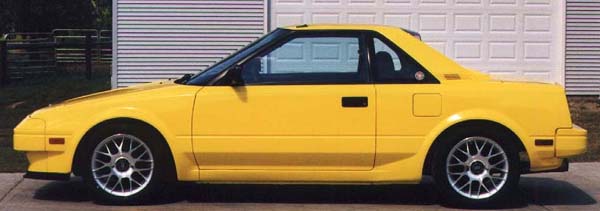
|
|
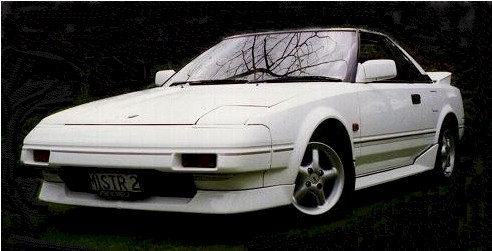
|
1986
- Toyota
launches "T" - Bar (T-Top) roof option with detachable glass
panels. Modified the front spoiler making it less boxy and more
aerodynamic. The Supercharged version introduced in
Japan. |
1987
- Many
changes are made to improve the car's engine, brakes, suspension,
and handling. T-Tops
become an option; base model introduced with less expensive
interior and without T-Top or spoiler. Other changes:
- Rear tail lights slightly modified (integrated
reflector is square rather than round).
- Emergency brake moved to right side.
- New Door panels.
- Rear speakers added to top of "B" (?)
pillar (above and behind occupant's heads).
- Ashtray moved from front of console to left of
console.
- Radio goes double-din.
- Air vent on right side changed from a flush, two
sectional, horizontal slotted opening to a protruding, single
section, vertical slotted opening.
- Entire Air intake system changed, with the air intake
starting from the side vent wrapping around the back to a
trunk mounted filter, then on to a MAF mounted lower in the
engine bay.
- Instrument cluster (markings) changed.
- Automatic Climate Control dropped for different heat
controls.
- The Steering wheel was changed from two spokes to
three, and diameter is decreased. The center
reads "MR2" rather than "TOYOTA".
- Entire suspension was slightly changed. It was
"revised" to remove some over-steer characteristics
- New alloy rims.
- Mid 87: Changes to 4A-GE to increase it strength
A new C-52 Transmission is introduced which
was stronger than the C-50 and helped correct 5th gear
from slipping out..
|
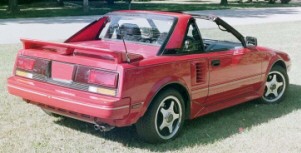
|
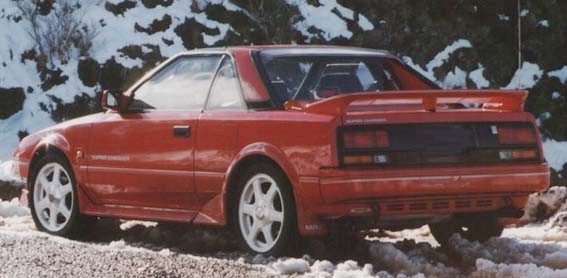 |
1988
- The
supercharged
MR2 becomes available in North America. You can tell an MR2 is supercharged if it
has a decal on the back left that says "Supercharged".
A
decal is on both doors as well. If the vents on
the engine compartment are raised up (rather than being flat) it's
supercharged. There is an LED light on the tachometer that indicates
when the supercharger is being used. T-Tops are standard on the
supercharged model with color coded mirrors (the NAs have black
mirrors.)
|
| 1989
- This
is the last model year for the MR2 MK I in North America.
Rear
stabilizer (sway) bar added to the supercharged models. All models
get color coded mirrors. A third brake light is integrated into
the spoiler.
1990
- "Super
Edition" launched in Japan (270 built).
|
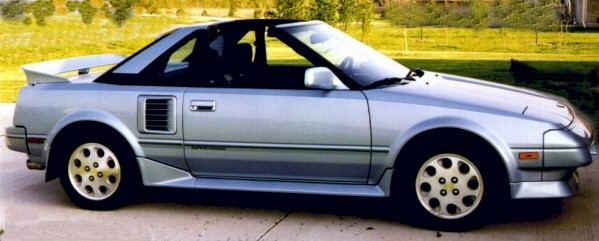
|
|
There
were a total of 163,845 MK I MR2s (AW11s) made over its
approximate 6 year run.. (Technically, not all of them were
AW11's as there was more than just the AW11. i.e. the AW15, etc.
although most all are called just simply the AW11). |
1984:
1217
Price: ~$11,000
1985:
37674
Price: ~$11,000
1986:
31352
Price $11,298
1987:
15742
Price: $12,578
1988:
8144
Price: $12,808 ($16,418 SC)
1989:
2537
Price: $13,798 ($17,628 SC) 1990: 270
Price: $? |
|
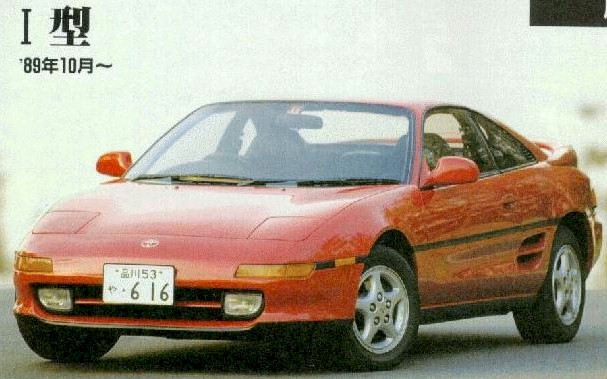
|
1990
-
All new MR2 on
display at the Tokyo Show including a brand new Turbo version.
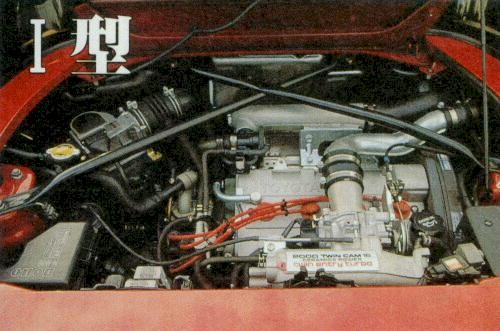
1990
- MR2 MK II
goes on sale in Europe in April.
|
| 1991
- The second
MK II model is introduced in December 1991 to the North American
market. Notice that the wheels
have changed.
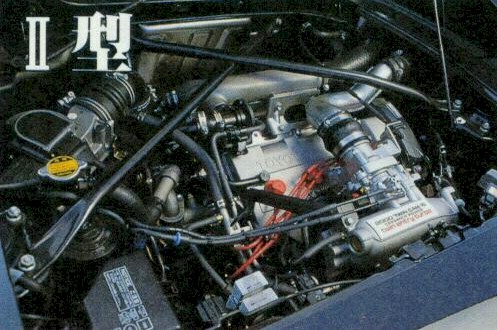
This
was the first year for the second generation MR2 in North America.
Available in Turbo and NA. Most Turbo models have fog lights (a
few early models didn't have them). NA models never came with fog
lights. The Turbo models say "turbo" on the right side
of the trunk lid. The tachometer goes to 9,000 rpms and the speedometer
to 160 mph. The tachometer on the NA model goes to 8,000 rpms and has a
140 mph speedometer. Turbo models also have a center console unit
between the seats.
|

|
|
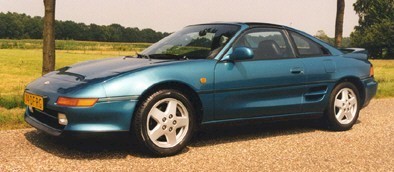
|
1992
- Wet
weather handling improved by changing suspension. The "Low
Power" base model and automatic transmission option is dropped in
Britain.
|
| 1993
- Many
changes; stiffer suspension, wider 15" "square
spoke" 5-star wheels (as opposed to 14" alloys in '91
and '92. Bigger front spoiler, new manual gear shifter, upgraded
brake system, and larger throttle body. Turbo models have limited
slip differential transmission, or "LSD". There were
only a few turbo models made with a hardtop this year.
|
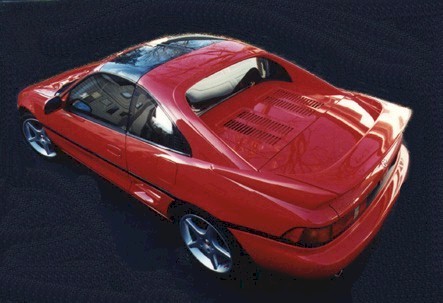
|
|
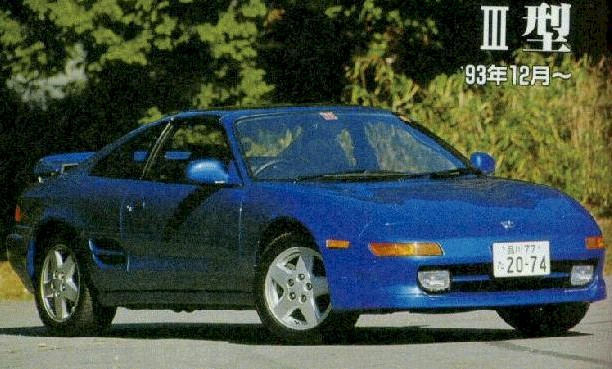
|
1993
- 1994
- The
third MK II model received an updated one-piece spoiler,
color-matched body trim, chassis modifications and redesigned
taillight cluster. Engine power
was increased to 174bhp. It
was introduced in December 1993.
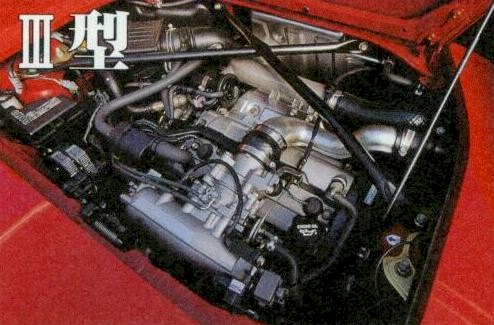
|
| 1994
- Tweaked
rear spoiler and different tail lights. The back honeycomb piece
was removed, and the reverse lights are in closer to the center.
Color-keyed front air-dam, passenger side air-bag, slightly
smaller steering wheel that doesn't say "MR2" in the
center. Multistage struts for better ride, and blinkers on the
front quarter panels added. There were no Turbo models without
T-Tops this year.
|
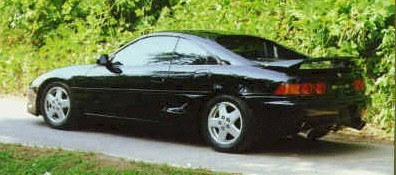
|
|
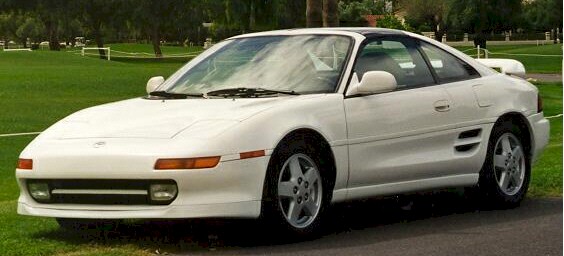
|
1995
- Redesigned
CD-Player. Last year of production for the American market.
Available in other parts of the world.
|
| 1996
- The
fourth MK II model is released in June. There
are several visual updates in this model. Clear corners have been
added and the front side reflector has been replaced by trim and
moved near the driver's door above the trim. It is interesting
that this particular model has returned to the separate colored
trim abandoned in the previous generation. 10th
anniversary limited edition launched in Britain.
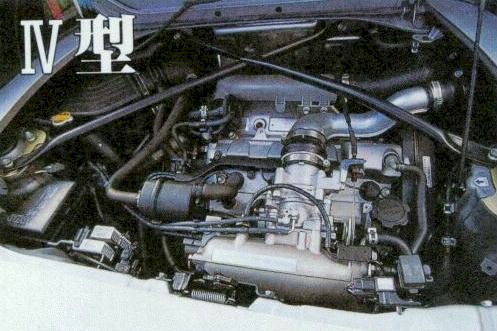
|
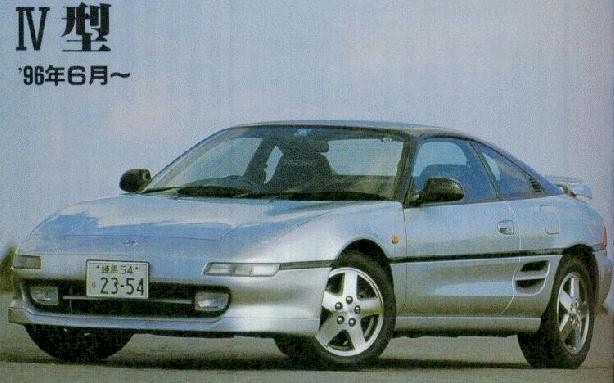 |
|
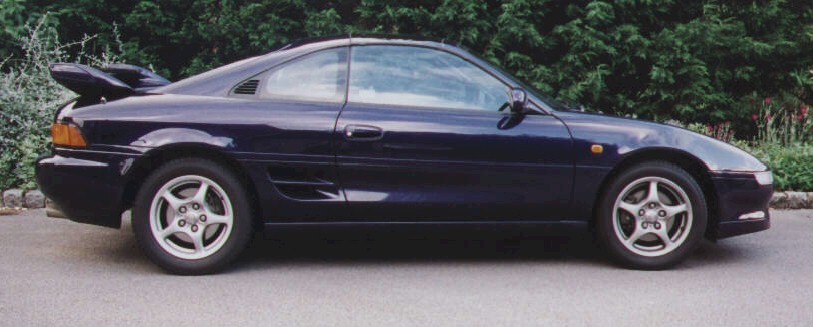
|
1997
- 1998
- Final minor changes
to styling, most notably the raised tail spoiler. MR-S concept car
first seen at 1997 Toyota Auto Show. |
| 1999
- Third
Generation MR-S roadster (Spyder) previewed at Tokyo and London
auto shows.

|
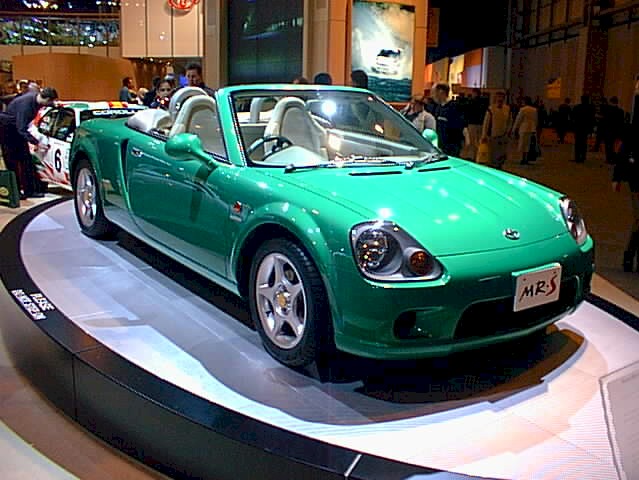 |
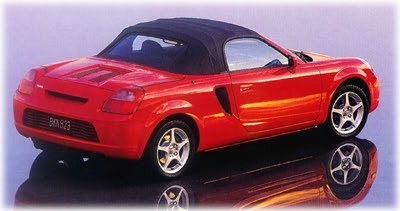 |
2000
- Third
Generation MR2 Spyder launched in May for sale to North America. This is the first
convertible MR2.
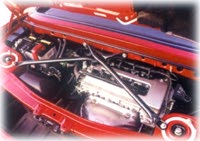
|
| |
|
2001
- Celeste's
2001 liquid silver Spyder with yellow interior will be delivered
in March 2001.

|



























